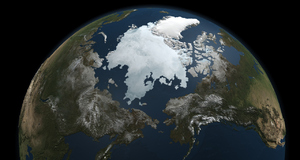Controlling the Weather: Science Fiction, or Reality?
By
2010, Vol. 2 No. 01 | pg. 1/1
KEYWORDS:
Call it a high-tech rain dance. Farmers worried that drought or hail will put their crops at risk have a number of options, some stranger than others. They can improve their irrigation system. They can buy hail insurance. Or, they can contact Weather Modification Incorporated in Fargo, North Dakota and order some “enhanced precipitation” or “hail damage mitigation.” It sounds like science fiction, but in many places around the world, scientists are actively attempting to manipulate the weather.Weather Modification, Inc. has been conducting such projects since 1961. The practice itself dates back to World War II, when scientists at General Electric started researching ways to prevent aircraft icing. Today, weather modification is used in 24 countries around the world including the United States, Russia and China. The most recent high-profile example, reported in Popular Science and Business Week, was a heavy snowstorm in Beijing that stirred up controversy about the practice. Hoping to alleviate a prolonged drought, the Beijing Weather Modification Office, which also attempted to control precipitation at the 2008 Olympics, seeded clouds around the capital. What followed was a snowstorm that blanketed the area and brought the city to a grinding halt. There are a number of reasons weather modification projects are undertaken, says Dr. Andrew Detwiler at the South Dakota School of Mines and Technology. “Most frequently, it’s to increase precipitation either in the form of rain or snow. In the US, most of the active weather modification projects are to increase snowpack in the wintertime in the mountains in order to fill the reservoirs when the snow melts.” “It’s another option for getting water,” says Hans Ahlness, Vice President of Operations at Weather Modification Incorporated, “the atmosphere is just another irrigation source.” The most common method of weather modification is called cloud seeding, in which silver iodide is used to freeze super-cooled water droplets. Flares loaded with a few grams of the chemical can be burned on the ground, shot into the clouds or dropped in using airplanes. “Silver iodide has a crystal structure that’s quite close to that of ice,” explains Detwiler. “If a silver iodide particle contacts one of these super-cooled water drops, it’ll cause it to freeze instantly. If you disburse silver iodide smoke into a super-cooled cloud you can generate ice particles and snow.” Both hail suppression and rain enhancement work by the same principle. The silver iodide gets the precipitation process rolling, resulting in either more rain or smaller hail crystals. According to Ahlness and other experts, cloud seeding can generally produce a 40-45% decrease in hail damage and a 10-15% increase in rain or snowfall. However, these statistics, which are based on hail insurance claims and rainfall measurements, vary widely in individual cases. The cost of weather modification projects ranges from a few hundred thousand to several million dollars. In western North Dakota, for example, eight planes are used for hail suppression with a budget of about $500,000 for every three months of cloud seeding. This pays for the planes, equipment, pilots, meteorologists and cloud-seeding chemicals. For the power companies, farming co-ops and insurance firms that often finance these projects, it’s a small price to pay to alleviate a drought or avoid severe hail damage. But, here’s the catch: no one is quite sure how well, or even if, weather modification works. “The natural variability in the atmosphere is so high,” says Professor Michael Garstang of the University of Virginia, “that to try and demonstrate that it wouldn’t have naturally occurred is very difficult indeed.” A 2003 report by the National Research Council concluded that there is “no convincing scientific proof of the efficacy of intentional weather modification efforts.” As a result, in China and elsewhere, weather modification is a highly controversial science. The reasons for this, conclude scientists in the report, “include the lack of scientifically demonstrable success in modification experiments, extravagant claims, attendant unrealistic expectations, growing environmental concerns and economic and legal factors.” In the future, weather modification advocates hope that the field will become more accepted. With the proper funding, predicts Dr. Tom DeFelice, chair of the Weather Modification Association’s Public Information Committee, weather modification will ultimately prove effective. In the coming years, he says, we may even see things like tornado modification. “We will, over the next two decades, get to a point where we’ll be able to do certain forms of weather modification,” agreed Garstang, “either enhancement of rainfall, reduction of hail or even moderation of intense systems like hurricanes.”
Ahlness, Hans. Weather Modification Inc. – Vice President of Operations. Phone Interview. November 16, 2009. DeFelice, Thomas. Weather Modification Association – Chair of Public Information. Phone Interview. November 19, 2009. Dillow, Clay. “China’s Weather Modification Brings Crippling Snow Storm to Bejing.” Popular Science. November 11, 2009. http://www.popsci.com/science/article/2009-11/chinas-weather-manipulation-brings-crippling-snowstorm-beijing. Accessed November 19, 2009. Detwiler, Andrew. Institute of Atmospheric Sciences – South Dakota School of Mines and Technology. Phone Interview. November 16, 2009. Garstang, Michael. Department of Environmental Sciences at the University of Virginia – Research Professor. Phone Interview. November 16, 2009. Roberts, Dexter. “Beijing Snow Storms Spur Angry Debate.” Business Week. http://www.businessweek.com/globalbiz/blog/eyeonasia/archives/2009/11/beijing_snow_st.html. Accessed November 19, 2009. Suggested Reading from Inquiries Journal
Inquiries Journal provides undergraduate and graduate students around the world a platform for the wide dissemination of academic work over a range of core disciplines. Representing the work of students from hundreds of institutions around the globe, Inquiries Journal's large database of academic articles is completely free. Learn more | Blog | Submit Latest in Environmental Studies |


















